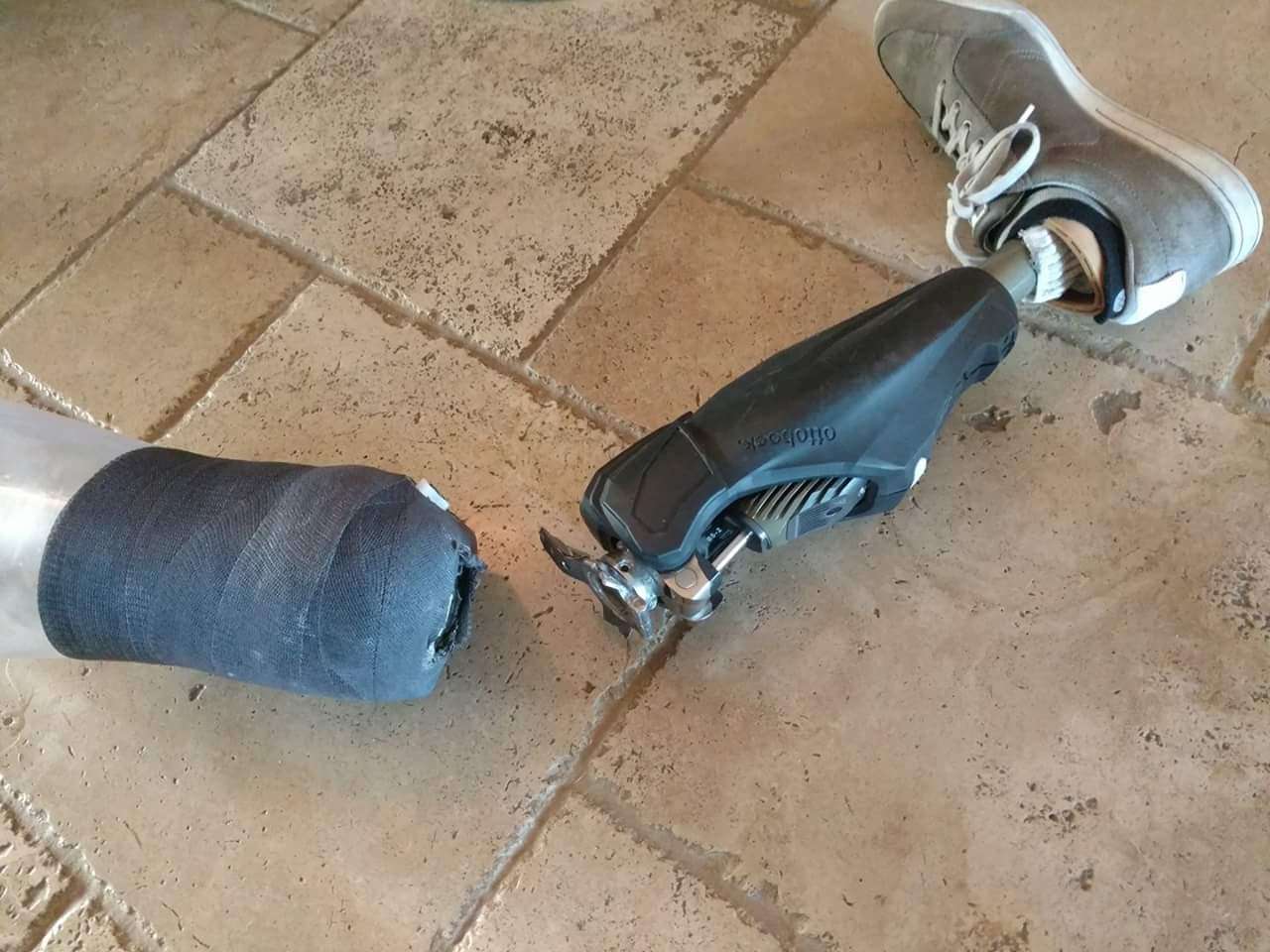Rebound O&P
Updated 4:14 PM CDT, Mon June 2, 2025
Published Under: Prosthetics

Life happens, and sometimes that includes unexpected issues with your prosthesis. Whether a part breaks or you can’t get it off, it’s important to know how to respond calmly and safely.
Here’s a practical guide to help you navigate a prosthetic emergency without panic.
🚨 Scenario 1: Your Prosthesis Breaks
From cracked feet to loose knee joints or snapped straps, things can—and do—break. If your prosthesis suddenly stops working properly, here’s what to do:
1. Stop Using It Immediately
Continuing to walk or bear weight on a damaged prosthesis can lead to falls or further injury. If you can, sit down and inspect the problem.
2. Check for Obvious Damage
Look for:
- Loose bolts or screws
- Cracked or worn components
- Torn liners or sleeves
- Unusual noises or instability
If it’s a minor issue like a loose strap or bolt, tighten it if you have the tools and know-how. Otherwise, leave it be.
3. Use Backup Equipment (If Available)
If you have a backup prosthesis or assistive device (like crutches or a wheelchair), now’s the time to use it.
4. Contact Your Prosthetist
Call your prosthetist right away to explain the issue. Send photos if possible. Many clinics have emergency repair options or can fast-track appointments for urgent cases.
🚨 Scenario 2: You Can’t Remove Your Prosthesis
This one can be scary—especially if your limb is swelling, you're in pain, or you’re worried about circulation. Stay calm and follow these steps:
1. Stop Trying to Force It Off
Yanking can cause more damage to your limb or the device.
2. Elevate and Rest
If swelling is the issue, elevate your limb and rest for a while. This may help reduce pressure and allow easier removal.
3. Use Cold Therapy (Cautiously)
A cold pack on the limb (not the socket) can reduce swelling. Wrap it in a towel—never apply ice directly to your skin.
4. Lubricate Gently
If your liner or sleeve is sticking to your skin, a bit of warm water, soap, or a prosthetic-safe lubricant might help loosen things up. Be gentle.
5. Still Stuck? Call Your Prosthetist or Go to Urgent Care
If your limb starts going numb, turns blue or white, or becomes extremely painful—get medical help right away. A doctor or prosthetist can safely remove the prosthesis.
Tips for Preventing Emergencies
- 🔧 Regular maintenance: Tighten loose parts and check for wear.
- 🧴 Use proper donning techniques: Incorrect application can cause fit issues later.
- 🧊 Avoid extreme temperatures: Heat can cause swelling or warp components.
- 🧳 Always have a backup plan: Keep spare sleeves, liners, or assistive devices on hand.
When in Doubt, Don’t Tough It Out
Trying to “push through” can make the problem worse. Whether it’s mechanical failure or a medical concern, it’s always better to get help than risk injury.
Save your prosthetist’s number in your phone. Keep emergency contact info and insurance details handy. And remember—you’re not alone. There are always resources and professionals ready to support you.

Comments